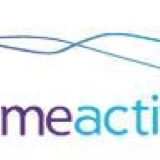Information
-
Audit Title
-
Pad
-
CHK Rep
-
Location
-
Conducted on
-
Contractors Onsite
-
Prepared by
EHS POLICY 101: HAZCOM
-
SDS'S available and accessible at all times
-
All containers in work area properly labeled with NFPA and HMIS labels
-
Windsock deployed at muster point
EHS POLICY 102: PPE
-
FR clothing worn properly by crew, buttoned, zipped and sleeves down
-
Safety glasses with side shields used by crew
-
Hard hats used by crew
-
Hard toed shoes used by crews
-
Hand protection used when necessary
-
Hazardous jewelry not worn by crew
-
Personal gas monitor worn by at least one member of each crew
-
Long hair contained
-
Proper PPE worn while handling chemicals, based in SDS/HMIS
EHS POLICY 104: HEARING PROTECTION
-
High noise areas present and marked
-
Proper hearing protection available
EHS POLICY 105: LOTO
-
LOTO being used
-
Locks and tags available to crew
EHS POLICY 106: HOT WORK MANAGEMENT
-
Smoking or open flames not permitted within 35' of compressed gases are used or stored
-
Hot work qualified individual onsite
-
Hot work permit available
-
No smoking rules observed
EHS POLICY 107: CONFINED SPACE
-
Site evaluated to determine the presence of confined space/permit required confined spaces
-
Confined space permit available
-
Atmospheric testing of confined space prior to entry
-
Confined space location warning signs erected
-
Emergency rescue equipment readily available
EHS POLICY 109: FIRST AID ANID CARDIOPULMONARY RESUSCITATION
-
First aid training provided
-
First aid supplies available onsite
-
Adequate 2-way radio or cell phone communication available
-
Emergency phone numbers posted
-
Provisions made for workers with known allergies
-
Provisions made for prompt medical attention
EHS POLICY 110: H2S
-
H2S training provided
-
Certification cards available
-
H2S training documentation of onsite personnel available
-
Onsite H2S safety review conducted
-
H2S training drills conducted
-
Hazard specific safety meeting conducted when H2S or SO2 present
EHS POLICY 111: CHEMICAL, FLAMMABLE AND COMBUSTABLE LIQUIDS/MATERIALS
-
Flammable liquids not stored within 50' of wellbore
-
When not in use, flammable and combustibles are stored in designed area or cabinets
-
All containers are grounded and bonded, conforming to manufacturers specifications when dispensing flammable or combustable liquids
-
Spill trailers in location and inventoried
EHS POLICY 112: HEAT AND COLD STRESS
-
All workers taking precautions for heat and cold
-
Heat stress and cold stress training provided
EHS POLICY 113: FIRE PROTECTION
-
Fire extinguisher available is company trailer, vehicles and all work areas
-
Annual inspection tag present
-
Monthly inspection tags present on each extinguisher
EHS POLICY 114: ELECTRICAL SAFETY
-
Electrical equipment 600V or greater labeled as HIGH VOLTAGE
-
Work clearance of 36" maintained in front of electrical equipment
-
Fixed equipment and portable equipment connect by cord grounded
-
Only 3 wire cords in good condition used onsite
-
No cords running through doorways or windows
EHS POLICY 115: POWERED AIND INDUSTRIAL TRUCKS (FORKLIFTS AND TELEHANDLERS)
-
Forklift operators certified and certificate available
-
Seatbelt provided (per manufacturer)
-
Backup alarm working
-
Auxiliary lighting working
-
Horn working
-
Rated lifting capacity
-
Pre-use inspection checklist completed
-
Tires in good condition
-
Refueling and hydraulic lines checked with engine off
-
No damage to windows or mirrors
-
Parked with brake on, key removed and forks grounded
EHS POLICY 116: HOISTING AND LIFTING EQUIPMENT
-
Workers operating hoisting and lifting equipment properly trained
-
Monthly hoisting machinery inspection record available
-
Straps and slings have been inspected and are in proper working condition
EHS POLICY 118: LIFTING AND CARRYING SAFETY
-
Proper lifting and carrying techniques being used
EHS POLICY 119: WALKING AND WORKING SURFACES
-
Any working surfaces above 4' from the ground must be protected by a work platform with guardrails at least 42" above platform, have a mid-rail and toe-boards or personal fall protection
-
Fall arrest system must have full body harness, deceleration device and a lifeline
-
Anchorage for fall arrest equipment must be capable of supporting 5,000lbs
-
All walking/working surfaces are clear of debris and tripping hazards and/or tripping hazards have been identified
EHS POLICY 120: LADDER SAFETY
-
No wooden ladders allowed onsite
-
Metal ladders must have a warning label for electrical caution
-
Ends or feet of ladder must be fitted with insulated non-slip material
-
Extension ladders must extend 3' past the landing if used to access another working surface and secured
-
3 points of contact utilized by workers while on ladder
-
Fixed ladders and cellar ladders are inspected and in good condition
-
Portable ladders inspected monthly and noted on monthly ladder inspection
EHS POLICY 121: BLOOD BORNE PATHOGENS EXPOSURE CONTROL
-
Blood borne pathogen kit available onsite
-
Blood borne pathogen exposure training complete
EHS POLICY 122: PRE JOB SAFETY ASSESSMENT
-
Pre PJSA safety tour of site conducted
-
Daily safety meeting being conducted
-
Accidents, if any, are discussed during safety meetings
-
PJSA filled out properly and completely
-
Individual contractors conducting JSA to identify task-specific hazards
GENERAL
-
Proper incident reporting procedure known and utilized by workers
-
Stop Work Authority in use
-
Adequate communication between contractors onsite
-
Emergency response plan understood
-
Smoke point identified outside of gate
ADDITIONAL COMMENTS
-
Add media













